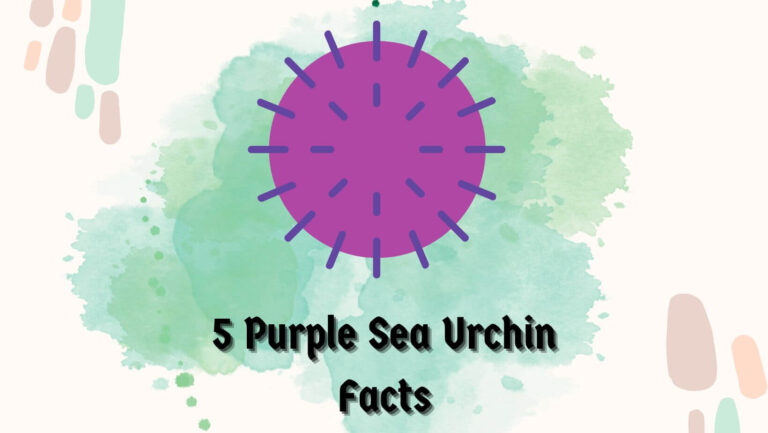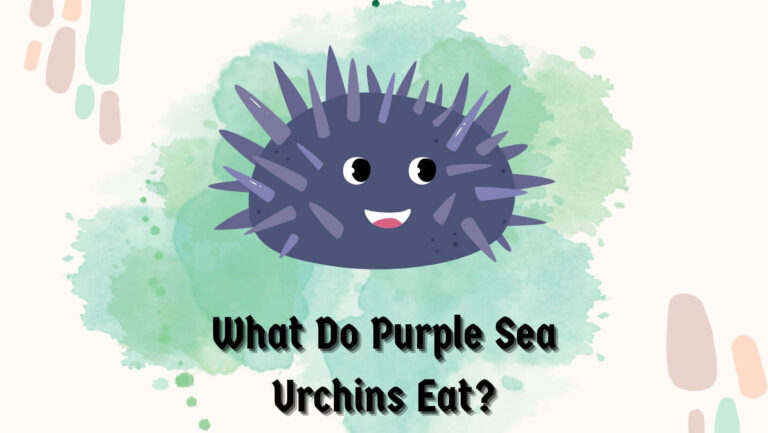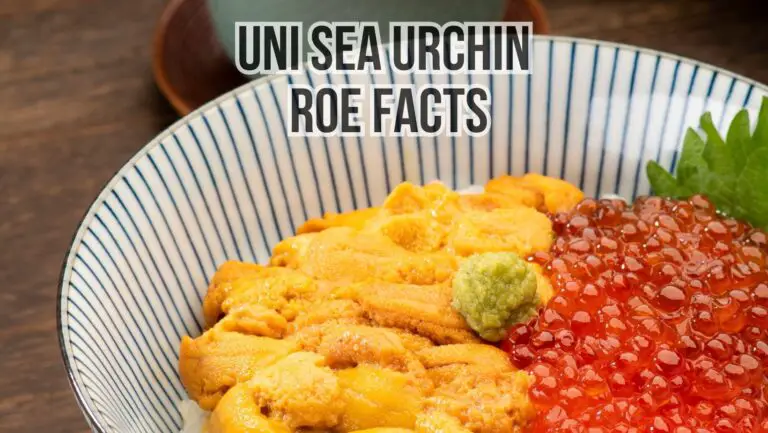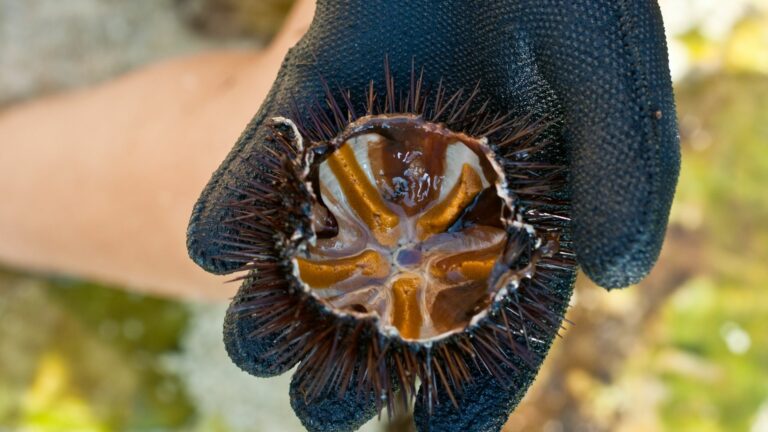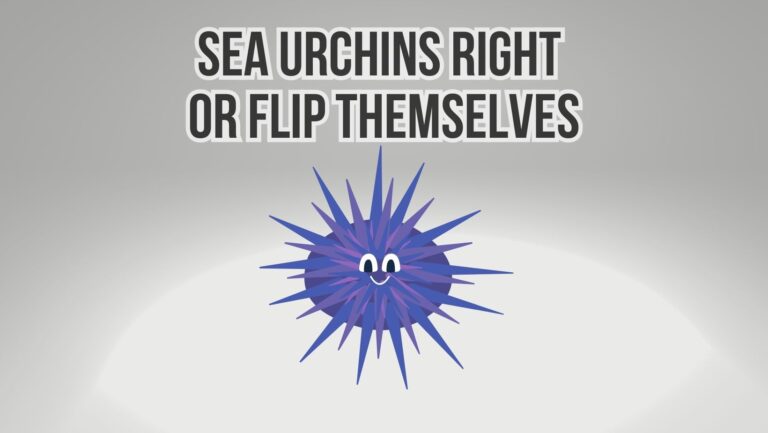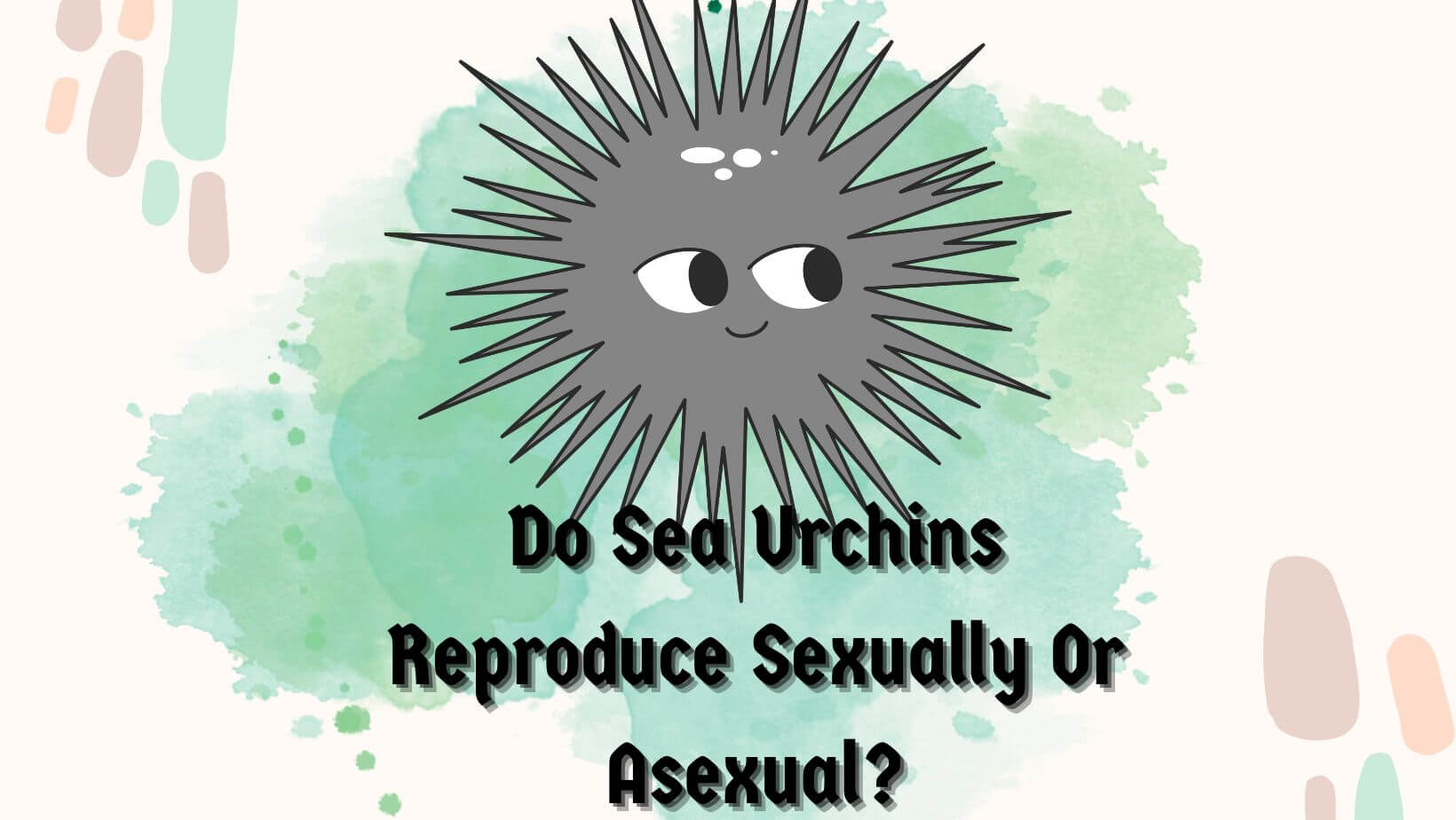
No doubt, sea urchins are important Marine creatures that help control the algal community’s overpopulation. Species are known to reproduce sexually, while others can reproduce asexually. Thus, it raises a very important question in many people’s minds: do sea urchins reproduce sexually or asexually?
In this article, I will discuss different modes of reproduction found in different sea urchins but also shed some light on the intricacies of sexual and asexual reproduction.
We will further talk about their significance in ecological and evolutionary studies. But before all this, let me get straight to the point, and give you the answer to the very first question: do sea urchins reproduce sexually or asexually?
Table of Contents
Do Sea Urchins Reproduce Sexually or Asexually?
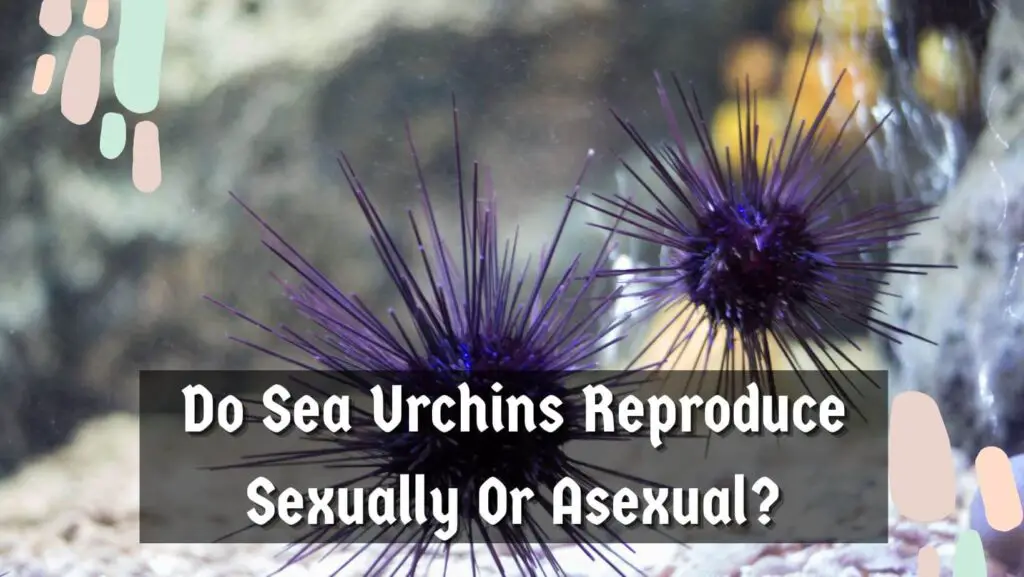
Sea urchins primarily reproduce sexually, while other species have the ability to do it asexually. They tend to have separate male and female individuals, and their fertilization process usually occurs externally in the water.
External fertilization takes place when a male sea urchin releases sperm into the water nearby female sea urchin release eggs. This type of reproduction is very common in sea urchins.
However, some species have the ability of limited asexual reproduction. These few species have also been noticed regenerating their lost body parts like spines or whole body parts. In rare cases, sea urchins can split into two or more pieces, and each fragment can grow into a new individual.
This type of asexual reproduction is also known as cloning or fragmentation. Although asexual reproduction has also been noticed in sea urchins, it is less common than in sexual reproduction.
Let’s talk about sexual and asexual reproduction in sea urchins more in-depth to gain more valuable insights into this fascinating creature.
Sexual Reproduction in Sea Urchins
As I told you earlier, sexual reproduction in sea urchins usually involves mixing eggs and sperm externally in the water, creating genetically diverse offspring. There are two primary modes of sexual reproduction in sea urchins: well-known external fertilization and internal fertilization.
Fertilization
When it comes to external fertilization, the sea urchins will release their eggs & sperm into the surrounding water and let the process allow for a chance encounter between gametes, enabling fertilization.
However, in this process, timing plays a crucial role in the success of external fertilization. A study by Levitan and colleagues found that synchronous spawning events of the green sea urchins increase fertilization success rates.
There are also other factors involved in fertilization success, like water temperature as well as pH level. Another research conducted by Carol and their colleague demonstrated that elevated water temperature could significantly impact the timing and success of fertilization in sea urchins.
The study also found that the increased temperature affected sperm performance and reduced fertilization rates in the purple sea urchins. A few certain species are known to employ internal fertilization to give birth to offspring.
In the case of internal fertilization, sperm is usually directly transferred into the female’s body for fertilization.
This type of mechanism is quite notable in Antarctic sea urchins (Sterechinus neumayeri), where internal fertilization occurs due to the extremely cold temperature of the water as well as ice covering inhibiting external fertilization.
The male sea urchins will transfer their sperm packets, spermatophores, to the female, ensuring successful reproduction in a challenging environment.
Gametogenesis
Gametogenesis is a process of gamete development that includes oogenesis (egg development) and spermatogenesis (sperm development). During oogenesis in female sea urchins, the egg will go through various stages of development.
For instance, a purple sea urchin or oogenesis usually involves germinal vesicle migration and vitellogenesis. The germinal vesicle migration usually occurs when the oocyte’s nucleus moves to the periphery of the sea urchin’s egg, forming the fertilization-embryo.
Vitellogenesis is the accumulation of the yolk protein within the egg which provides essential nutrients for the embryo’s development. In the male, sea urchin spermatogenesis will take place, leading to the production of natural sperm.
This process usually involves stages including spermatogonia as well as spermatocyte formation. Factors that can affect the quality of the sperm and its formation, like temperature, food availability, and reproductive seasonality, have been seen directly influencing sperm production and quality in sea urchins.
Larval Development
After fertilization, sea urchins usually go under larval development, translating from a fertilized egg to a fully formed adult organism. This development process is crucial and popularly known as embryogenesis which involves a series of cleavage stages that gradually divide the fertilized egg into multiple cells.
This cell later eventually forms a blastula, a hollow sphere of cells. Subsequently, gastrulation occurs, transforming the blastula into a gastrula which develops distinct germ layers. However, a few environmental factors also play a role in water temperature, salinity, and food availability on successful larval development.
You should know that sea urchin larvae tend to float on the water while feeding on the microscopic phytoplankton. A study also proved that larval survival and growth in purple sea urchins are highly dependent on food availability, which highlights the importance of a suitable environment for fertilization and larval success.
You should also note that sea urchin larvae pass through different stages, like pluteus and echinopluteus, which exhibit unique morphological & physiological adaptations.
This adaptation helps sea urchins to disperse in the water column and facilitate their transition into adulthood. However, the duration of the larval stage varies among species, but it generally lasts several weeks before metamorphosis occurs.
You May Also Like Reading
Asexual Reproduction in Sea Urchins
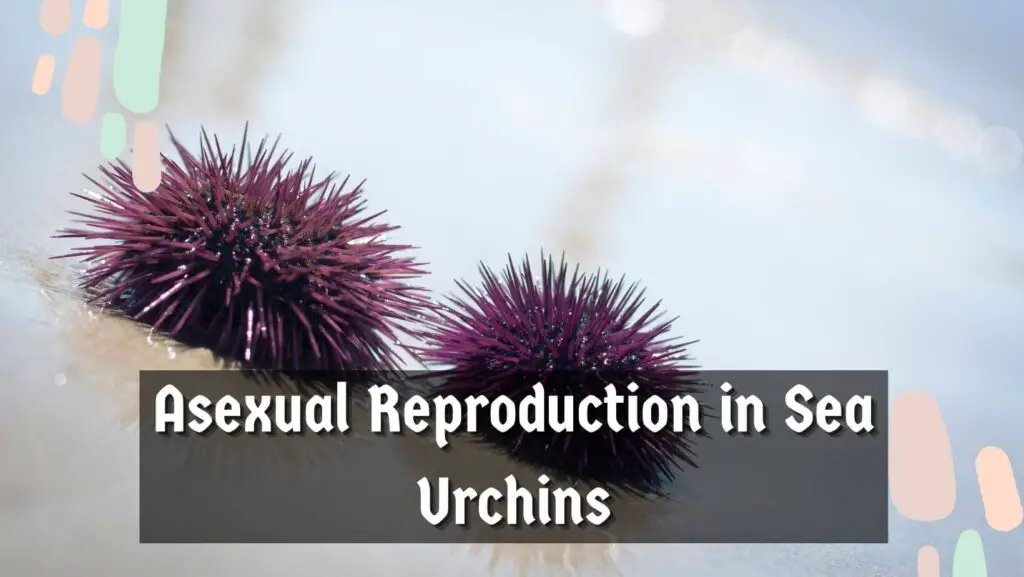
As mentioned earlier, a few species of sea urchins have also been noticed performing asexual reproduction instead of sexual reproduction like regeneration, fragmentation, budding, or cloning. Let’s look at each of these processes to learn more about their reproduction system.
Regeneration
Reservation is a process that involves the ability to regrow any lost body part. One common mechanism for asexual reproduction is considered to be autotomy, the intentional detachment of a body part.
For example, if a sea urchin loses more or one of its arms due to predation or injury, it will regenerate new arms to replace the lost ones. This regeneration process usually begins with the formation of a blastoma, a group of undifferentiated cells that will develop into a new body part.
Also, note that fragmentation is another mode of asexual reproduction in sea urchins. If a sea urchin breaks into multiple fragments, each will have the potential to regenerate and develop into a new individual.
The regenerative captivity will also vary from species to species of sea urchins, which are also influenced by factors like age, nutritional nutrition, and environmental conditions.
Budding
Another form of asexual reproduction noticed in sea urchins is budding. Budding is a process in which new individuals usually develop as outgrows from the parent organism. In sea urchins, budding usually occurs in a specialized region known as bud sites. T
hese sites usually provide favorable conditions for the growth and development of new individual species. However, there are a few factors like water, nutrient availability, and genetic factors that will also influence the success & frequency of budding in sea urchins.
Cloning
Another asexual reproduction that sea urchins may employ is cloning which refers to the production of genetically identical copies of an organism. Few species of sea urchins did exhibit natural and artificial cloning methods.
The natural cloning method occurs when a sea urchin reproduces asexually through fragmentation or budding, resulting in genetically identical offspring.
On the other hand, artificial cloning techniques involve somatic cell nuclear transfer, usually done/practiced in laboratory settings for research purposes. Cloning provides many advantages in terms of genetic uniformity and potential limitations.
Comparison between Sexual & Asexual Reproduction in Sea Urchins
You should know that both asexual and sexual reproduction offers advantages & disadvantages for sea urchins. Sexual reproduction helps in genetic diversity, which later enhances the species’ adaptability to changing environments.
On the other hand, asexual reproduction will provide an advantage of rapid reproduction and colonization under favorable conditions.
A few factors may influence the choice of reproductive mode in sea urchins, including environmental conditions, predation pressure, nutrient availability, and other resources.
However, the evolutionary implications of different reproductive strategies in sea urchins contributed to their overall reproductive success and adaptation to diverse habitats.
This is why you can find them available worldwide in the seabed, coral reefs, and Rocky reefs. They are also quite abundant in the forest or marine vegetation.
- More Helpful Posts
- Is Sea Urchin Poisonous to Eat
- Do Sea Urchins Harm Coral?
- How to Tell if a Sea Urchin is Dead
Conclusion
I hope I have given you a complete understanding of sea urchin reproduction. It is important that we encompass both sexual and asexual modes for ecological and evolutionary studies.
The diverse reproductive strategies that sea urchins exhibit are also common in other Marine animals and contribute to their resilience and survival in a dynamic Marine environment.
I hope you find this article helpful and interesting in exploring the fascinating facts behind the sea urchin’s reproduction mechanism. If you have gained valuable insight into the complexity of life’s reproductive diversity in the ocean, share this article.
Your share will help many people learn about the different types of reproduction methods that sea urchins employ. They will also learn the answer to the question: do sea urchins reproduce sexually or asexually?
Do check our other helpful guide on sea urchin preserves and conservation. See you in the next post, till then, take care and goodbye.

